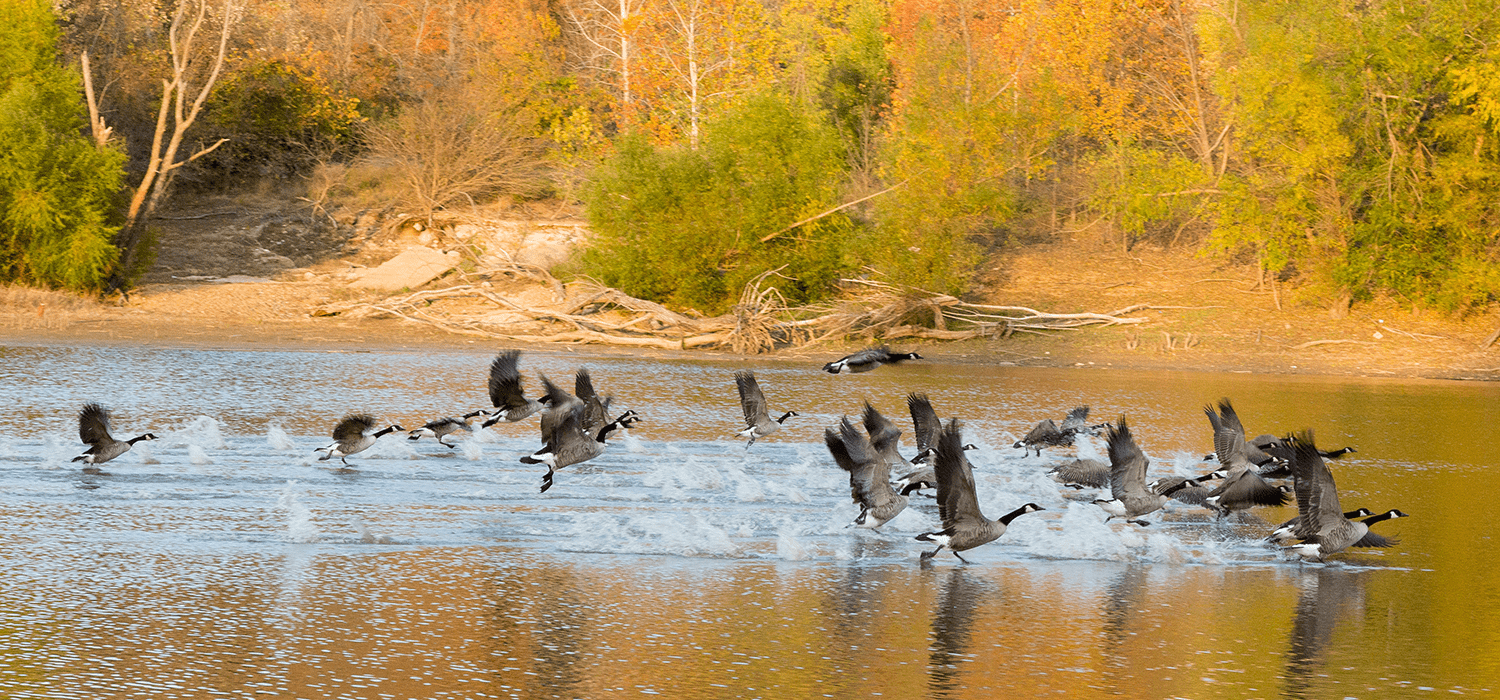 Birdwatching is a hobby that combines fresh air, exercise, and beautiful scenery wrapped up in a treasure hunt. Not only that, birdwatching has no age limitations, requires minimal equipment and gives everyone the opportunity to be a citizen-scientist. The only word of caution from experienced birdwatchers is that once you start, it can become addicting!
Birdwatching is a hobby that combines fresh air, exercise, and beautiful scenery wrapped up in a treasure hunt. Not only that, birdwatching has no age limitations, requires minimal equipment and gives everyone the opportunity to be a citizen-scientist. The only word of caution from experienced birdwatchers is that once you start, it can become addicting!
Greenways are great places for birdwatching. In fact, several have been recognized by the Audubon Society as “important bird areas.” We asked the St. Louis Audubon Society to recommend the best greenways for spotting a wide variety of birds along with some tips for beginners.
Can you find the Bird of the Week? Learn more at St. Louis Audubon Society here.
Best Greenways for Birdwatching
 Fee Fee Greenway: Aquaport to Creve Coeur Park
Fee Fee Greenway: Aquaport to Creve Coeur Park
The best place for spotting birds along this greenway is the area from McKelvey Woods to Creve Coeur Park. It meanders through what is known as an “edge habitat”—the space between a developed area and a natural habitat. The greenway’s location on a prairie flood plain near the Missouri River provides food and refuge for many migrating waders, waterfowl, and shorebirds.
Meramec Greenway near the Al Foster Trail
The section of the Meremec Greenway near the Al Foster trail lies within a bottomland forest and is considered an important bird area by the Audubon Society. It provides habitat for breeding forest birds, such as the Red-shouldered Hawk and Prothonotary Warbler. You can find all 154 species of birds that have been recorded in this birding “hotspot” on ebird.
River des Peres Greenway at Carondelet Park
Carondelet Park is on the eastern end of the River des Peres Greenway. This historic, 179-acre park provides stopover habitat for many migrating species in spring and fall. It also provides some breeding habitat for many birds excluded from the surrounding urban landscape (e.g., hawks and owls). The Audubon Society recently recorded 29 different species of birds on a single early-morning beginner bird walk in Carondelet Park!
Busch Greenway: Katy Trail to Missouri Research Park to August A. Busch Conservation Area
A good portion of the Busch Greenway passes through second-growth upland and bottomland forest, shrubland, and cropland areas managed by the Missouri Department of Conservation. All of this great breeding and stopover habitat means great birdwatching! If you want to see lots of birds, focus on the area between the Duckett Creek trail head and Katy Trail or the section that stretches between Weldon Spring and August A. Busch Conservation areas.
 Birdwatching for Beginners: What do you need?
Birdwatching for Beginners: What do you need?
- A pair of binoculars
- Comfortable walking shoes
- Weather-appropriate clothing
- A field guide to birds. There are several options:
- The Audubon Society has a list of recommended field guides here. You can also borrow one for free from your local library!
- If you prefer to use an app on your phone, Cornell Lab of Ornithology has created the Merlin Bird Identification App. It prompts you to answer five questions about the bird you have seen and it offers suggestions about what kind of bird it is based on your location. Learn more about Merlin here.
The Audubon Society also has a free app for identifying birds. Learn more about the Audubon Society app here: https://www.audubon.org/app
Birdwatching Tips
- Walk slowly
- Use quiet voices; no shouting
- Smaller groups are better
- Observe; do not interact with the birds
- Look low along the ground in “shrubby” areas and high up in the tree tops
- Listen carefully (If you want to familiarize yourself with different bird songs, visit the Cornell Lab of Ornithology “All about Birds” field guide. You can enter the name of the bird and hear their song. Find it here: https://www.allaboutbirds.org/guide/ )
Become a Citizen Scientist: Share the birds you have seen on the greenways!
eBird is the world’s largest biodiversity-related citizen science project, with more than 100 million bird sightings contributed each year by eBirders around the world. This collaborative effort is managed by the Cornell Lab of Ornithology. eBird lets you:
- Keep track of your bird lists, photos, and sounds
- Explore latest sightings from around the world
- Join the world’s largest birding community
- Contribute to science and conservation
- Find the latest bird hots spots in your area
- Track migration of birds through your area
Registration on eBird is free and it an excellent resource for beginning and expert birdwatchers alike. Click here to learn more about ebird.

